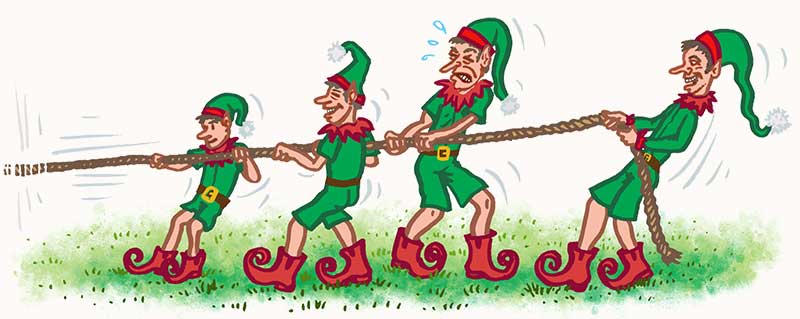
Santa has an impossible job. Literally impossible. He must circle the globe, in one night, visiting every country, town and home, delivering trillions (quadrillions?) of presents. There’s no way he could accomplish this alone. He needs a team of magical and highly-skilled elves backing him up.

![]() Here we go! 'Santa Claus is Coming to Town' (1970) (source)
Here we go! 'Santa Claus is Coming to Town' (1970) (source)
Having top-notch accessibility in digital products also seems impossible. Websites might consist of thousands of pages, all of which might contain hundreds of components. There are 78 success criteria in version 2.1 of the WCAG (Web Content Accessibility Guidelines), and each one might be interpreted in multiple ways. Sometimes they even contradict each other. It looks like we could use some Accessibility Elves!
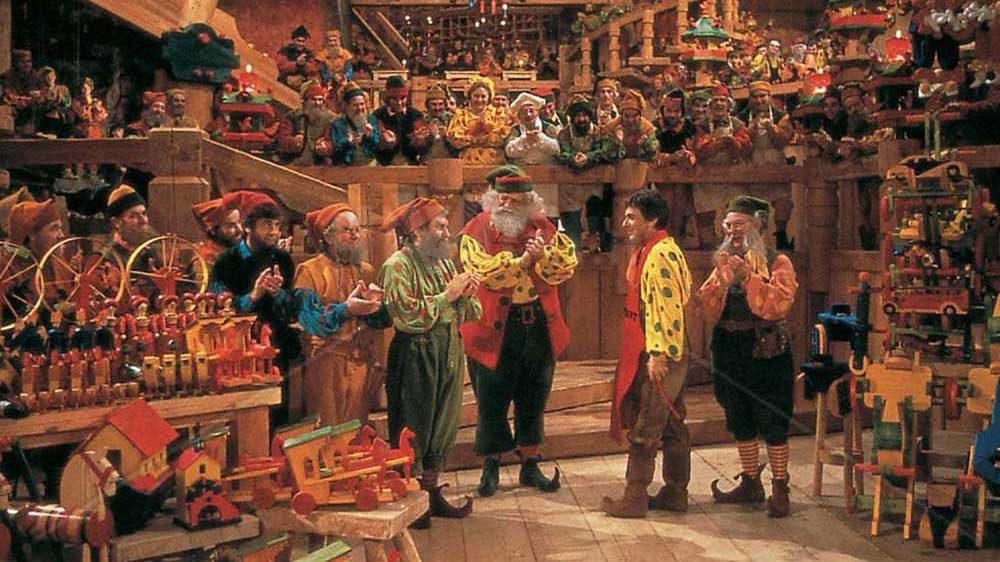
![]() Team meeting, from 'Santa Claus: The Movie' (1985) (source)
Team meeting, from 'Santa Claus: The Movie' (1985) (source)
Santa doesn’t check for bugs on Christmas Eve. His army of elves start working on December 26th—the previous year—to make sure everything goes right. Different elves have different job functions: toy design, woodworking, painting, inventory, wrapping, sled preparation, reindeer management and air traffic control to name a few. All these roles form a seamless process for Santa’s enterprise.
If you are checking for accessibility bugs at the end, or post-release, you’re on track for the worst Christmas ever (and probably the rest of the year too). There are many different roles in software that can help improve accessibility. The earlier an accessibility problem is detected, the more likely it is to be fixed. Accessibility problems can be avoided altogether through intentional design.
Let’s meet our Accessibility Elves!
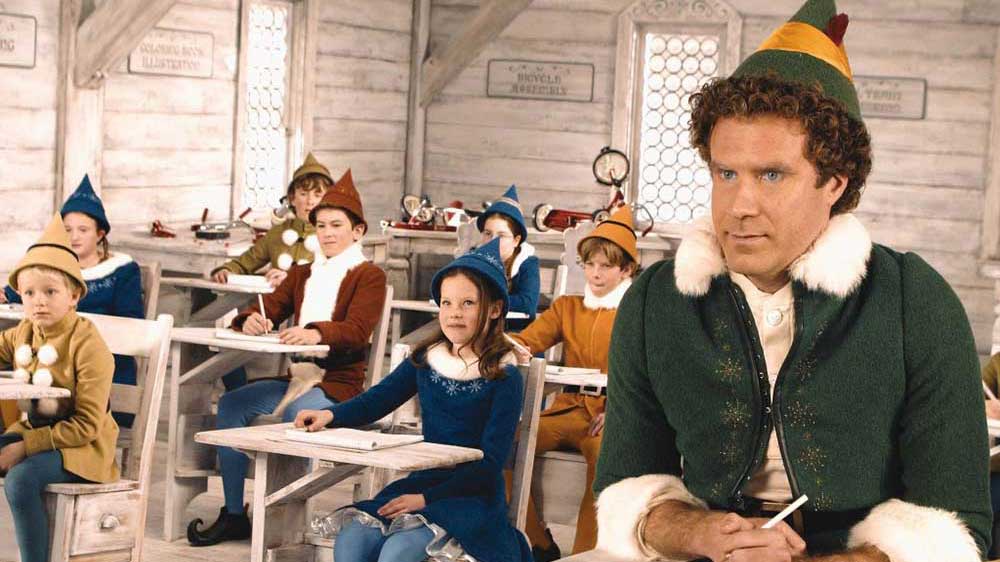
![]() Papa (out of shot) teaches Buddy and a class of elves in 'Elf' (2003) (source)
Papa (out of shot) teaches Buddy and a class of elves in 'Elf' (2003) (source)
Papa, the Accessibility Specialist
In the old world, accessibility elves found problems through audits and passed them to developer elves for fixing. In the new world, these accessibility specialists are teachers and accessibility evangelists. Instead of performing the audits themselves they can run audits as workshops with a cross-functional team to share the load and spread the knowledge.
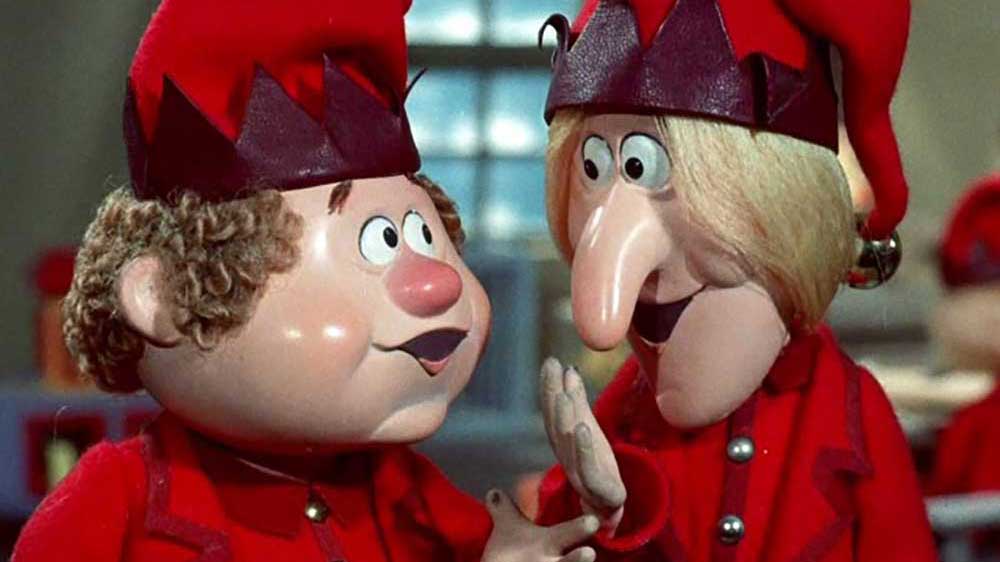
![]() Jingle and Jangle, elves from 'The Year Without a Santa Claus' (1974) (source)
Jingle and Jangle, elves from 'The Year Without a Santa Claus' (1974) (source)
Jingle & Jangle, the UX Designers
Here is where “intentional design” begins. UX designer elves create the design system for typography, colors, buttons and interactions. They toil away on style guides to define color contrast for type and graphics so they pass WCAG standards. They envision how an interaction will work using a keyboard only. They can design a focus state everyone can see. Even Santa! They keep us off the bad list by making sure that designs don’t use color only to communicate.
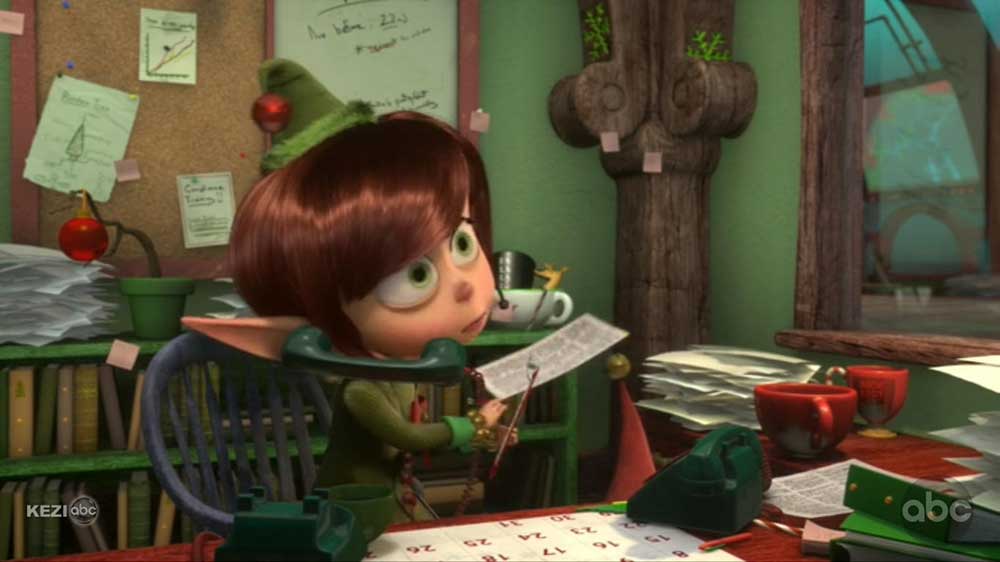
![]() Magee works as a Content Strategist when not performing the role of North Pole Christmas Eve Command Center Coordinator. From 'Prep and Landing' (2009) (source)
Magee works as a Content Strategist when not performing the role of North Pole Christmas Eve Command Center Coordinator. From 'Prep and Landing' (2009) (source)
Magee, the Content Strategist
Content strategy elves also execute intentional design. We all know that a huge part of accessibility involves proper labelling but who is writing all of these labels? Santa is not detail-oriented enough for this task and creative writing is not his thing. Content strategists can write link text that is meaningful, caption photos descriptively, and provide transcripts and captioning for video and audio content. They imagine how content is presented across different viewports. Their larger job is translating content across different devices and modalities all over the world every day!

![]() Scout elves, awaiting deployment. (source)
Scout elves, awaiting deployment. (source)
The Elf on the Shelf Research Squad
Checklists are great, standards are cool, and automated tools for audits are like a dream but they only catch some accessibility issues. WCAG has priority levels but how do you know which issues are the most important to your users? You can train yourself to use a screen reader to navigate a website but how close is that to the experience of an expert JAWS user? These are some of the reasons why it is so important to conduct research with users that have disabilities and who actually use the assistive technologies you’re designing for. UX researchers observe how these folks use our products in the real world like an elf-on-the-shelf (but not as creepy).
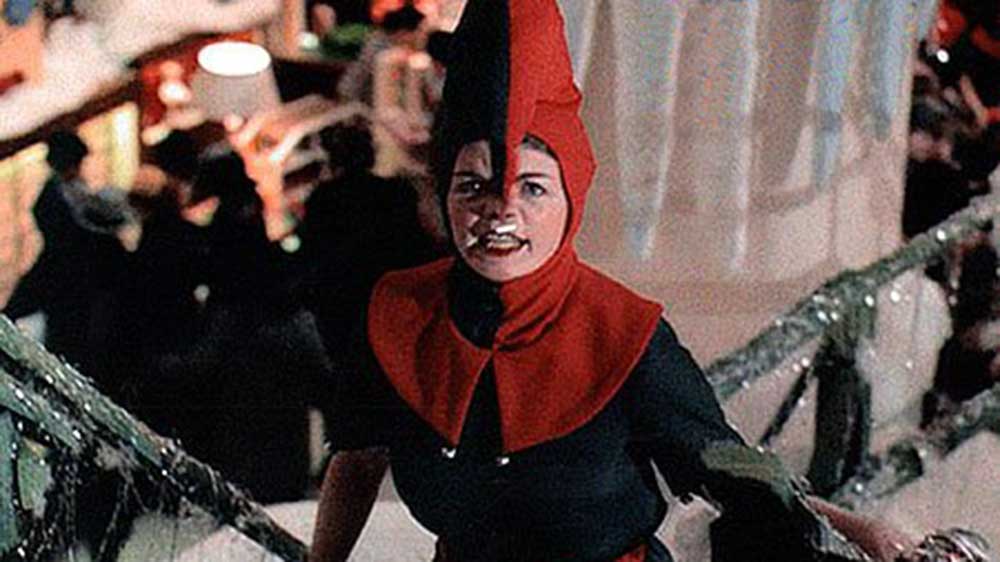
![]() “How about a nice football?” From 'A Christmas Story' (1983) (source)
“How about a nice football?” From 'A Christmas Story' (1983) (source)
Patty, the Software Developer
Developer elves execute the design into working code while singing a happy song. They set the tab order for interactions. They implement labels for pages, language, images, form elements, and headings. They create the well-formed HTML which integrates with assistive technology. They build responsive layouts and make sure errors and messaging are presented to everyone. They test it all throughout and figure out how to fix the issues.

![]() Head Elf Carl drills Hermie and the QA team in 'Rudolph the Red-Nosed Reindeer' (1964) (source)
Head Elf Carl drills Hermie and the QA team in 'Rudolph the Red-Nosed Reindeer' (1964) (source)
Carl, the Quality Assurance Tester
Quality assurance elves are the final check for accessibility issues. If any issues get past them Santa’s lawyers will become very cranky. They run automated tests for everything possible. All the work done by development is backed up by QA. They see how accessibility holds up on different devices, platforms and browsers. They determine each accessibility issue’s scope and describe them clearly so they can be fixed.
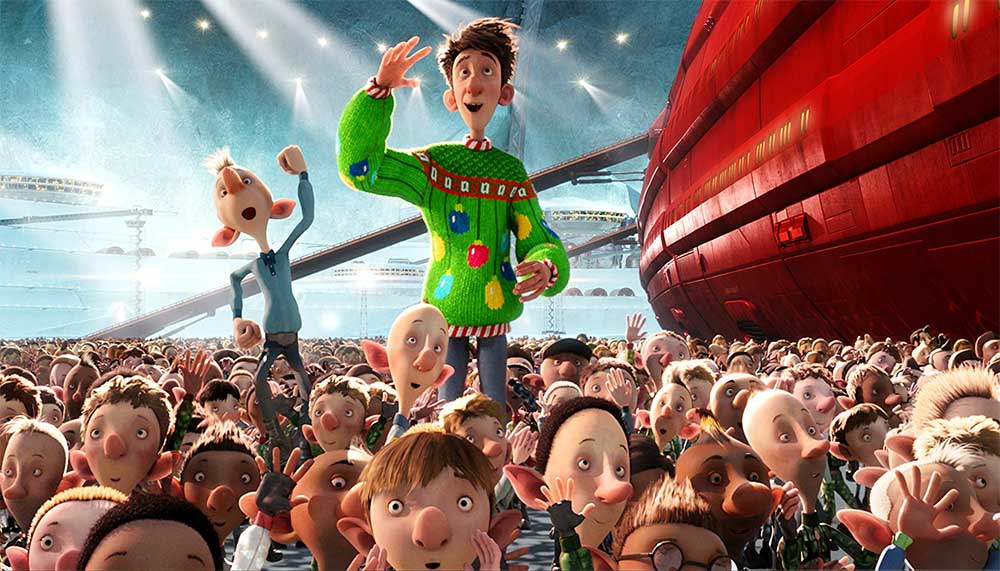
![]() Arthur knows that it all comes down to delivery. From 'Arthur Christmas' (2011) (source)
Arthur knows that it all comes down to delivery. From 'Arthur Christmas' (2011) (source)
Arthur, the Product Owner
Product owner elves’ primary responsibility for accessibility is setting the priority to make sure accessibility work gets done. They serve as Santa’s jolly lieutenants. By making sure the work is spread out strategically across the roles above they ensure that their product works for everyone.
* * *
When digital products work for everyone, the team jumps to the top of Santa’s “nice” list! His worries are put to rest as each team member uses their unique strengths to crush WCAG 2.1.
- Accessibility specialists spread the knowledge and get buy-in.
- UX designers create an accessible design strategy and envision new incluse interactions.
- Content strategists label the material and translate the content to different modalities.
- UX researchers get feedback from users to test how accessible our designs are in the real world.
- Software developers execute the design into working code and fix any accessibility bugs.
- Quality assurance testers perform the final check before designs are released. They describe any issues that they find so they can be fixed.
- Product owners set the priority and ensure the team has the time and resources needed to deliver an accessible product.
This plan helps spread the work and knowledge so accessibility issues are detected sooner or avoided altogether. Then all of the boys and girls are smiling on Christmas (release day) morning because they received the perfect gift: a product that works for them.
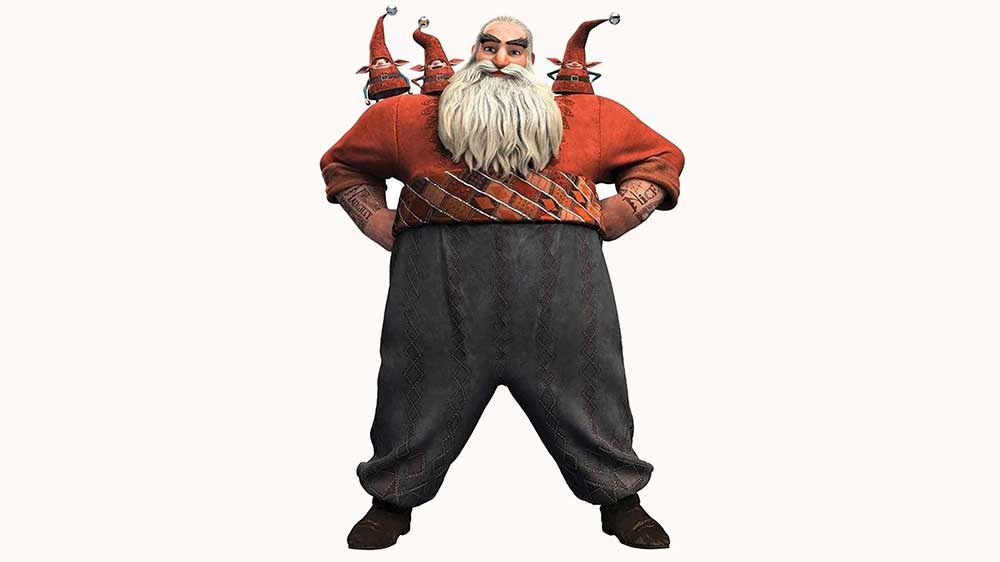
![]() Nicholas St. North's worries are put to rest as each team member uses their unique strengths. From 'Rise of the Guardians' (2012) (source)
Nicholas St. North's worries are put to rest as each team member uses their unique strengths. From 'Rise of the Guardians' (2012) (source)

